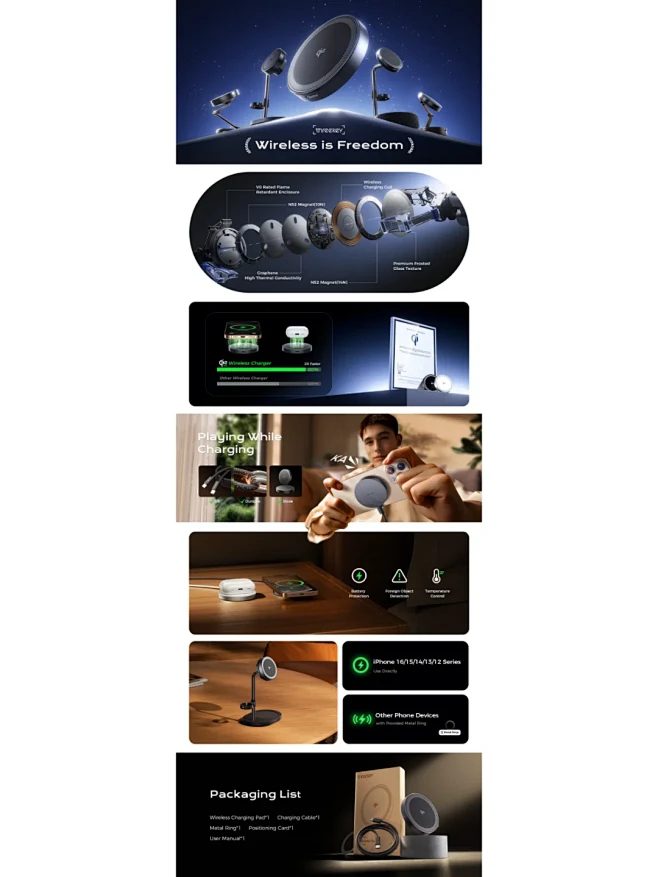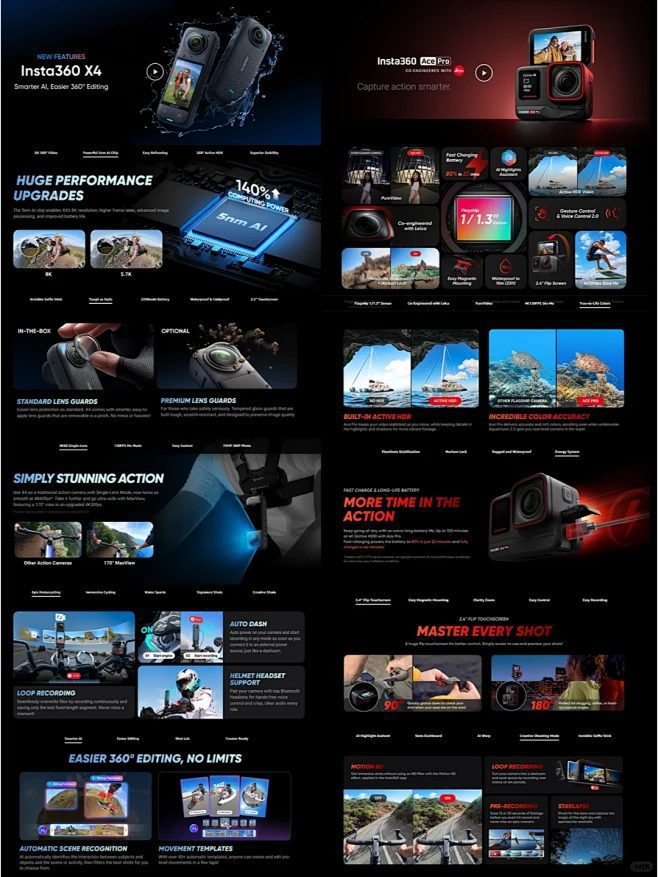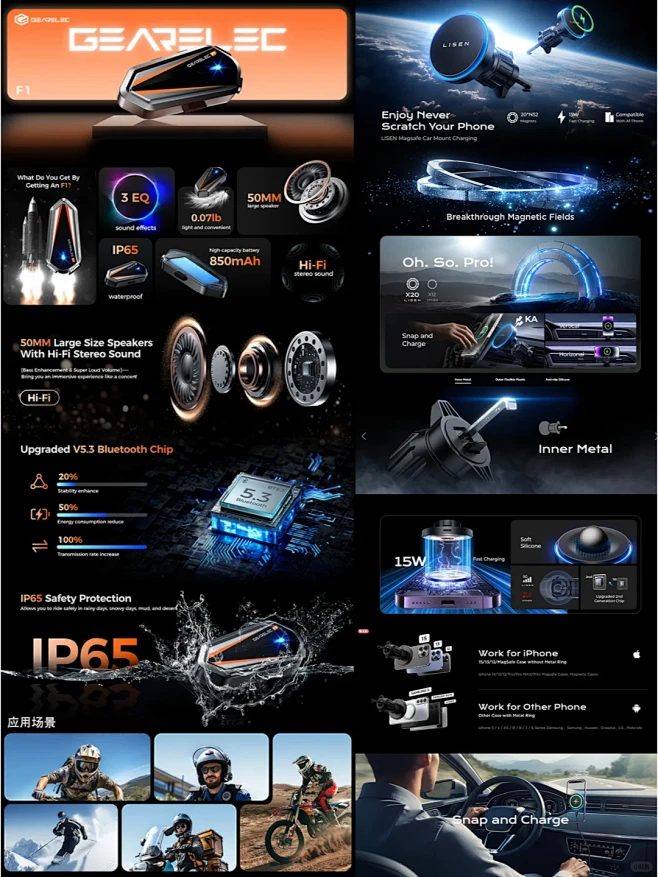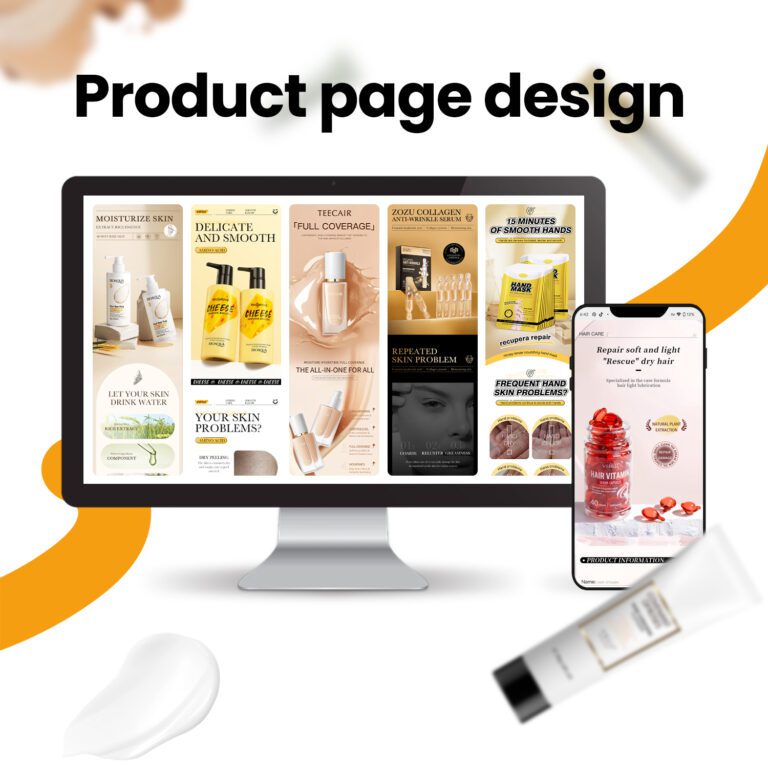How do unoptimized product pages affect performance and sales?
A poorly optimized product page can turn potential buyers away, hurting conversions without you realizing it. At Airsang Design, we’ll explain how a weak PDP impacts performance and how to fix it.
What is a Product Page?
A product detail page (PDP) is the dedicated page on your website that provides all the essential information about a product. It typically includes:
- Product name and brief summary
- Detailed description
- Pricing and any discounts
- High-quality images or videos
- Size/colour options or variations
- Stock availability
- Customer reviews and ratings
- Shipping, delivery, and return details
- A clear call-to-action (e.g., “Add to Cart”)
For most eCommerce businesses, this page is the final step before conversion. However, if it’s unclear, slow, or lacks trust-building elements, potential customers will walk away — regardless of how great the product is.

How can a poorly optimized PDP impact your business?
It Slows Down Your Website
Speed is crucial. According to Google, if a page takes longer than 3 seconds to load, over half of visitors may leave — especially true for mobile shoppers, who have even less patience.
Common causes of slow PDPs include:
- Large, uncompressed image files
- Excessive plugins or third-party scripts
- Auto-playing videos
- Poor hosting or server issues
A slow PDP not only frustrates customers but also harms your search engine ranking, making it harder for people to find your products in the first place.
It Leads to a Negative User Experience (UX)
A confusing or clunky PDP can quickly raise doubts for buyers. If they can’t find key information or don’t trust what they see, they’ll leave.
Examples of poor UX include:
- Vague or too short product descriptions
- Missing size charts, shipping details, or return info
- Hidden or small “Add to Cart” button
- Poor mobile display
To improve UX, focus on:
- Simple navigation
- Mobile-friendly design
- Faster page speed
- Clear, high-quality images
- Concise, helpful descriptions
- Easily visible call-to-action buttons
It Hurts Conversion Rates
You may be doing everything right, but still not seeing sales. Often, the issue lies with the product page.
A poorly converting PDP can significantly impact your revenue by leading to:
- Higher bounce rates
- More abandoned carts
- Fewer upsells or add-ons
- Lower average order value
For example, if you sell $50 skincare products and your PDP converts at 1%, you’ll make $500 from 1,000 visitors. Improve that to 2%, and you double your revenue without increasing traffic.

It Damages Your SEO (Search Engine Optimization)
Google cares about your product pages as much as your homepage or blog. If your product pages are poorly written or lack key SEO elements, you’ll struggle to be found.
Common SEO issues on PDPs include:
- Duplicate product descriptions
- No keyword targeting (e.g. “organic cotton t-shirt”)
- Missing image alt text
- No structured data for reviews or prices
- Thin or unhelpful content
- Poorly written meta titles and descriptions
- Broken internal links
- Messy URL structure
If Google can’t understand your page, it won’t rank it, leading to lost traffic and sales.
It Erodes Trust in Your Brand
Your PDP is more than just a product showcase—it’s a reflection of your brand. If the page feels outdated, difficult to navigate, or lacks key information, customers may question your business’s trustworthiness.
Online shoppers can’t touch or try the product, so your PDP must do all the convincing. If customers don’t feel confident in your brand, they’ll likely look elsewhere, even if your product is exactly what they need.

How to Improve Your Product Pages for Better Performance
You don’t need to rebuild your site — small changes can make a big impact. Start with these quick wins:
- Improve page speed: Optimize images, remove unnecessary plugins, and test load times
- Use high-quality, zoomable images: Show products from multiple angles
- Write clear, benefit-focused descriptions: Highlight why the product is needed
- Ensure mobile-friendliness: Over 60% shop on phones
- Add reviews and trust signals: Boost confidence and conversions
- Test layout and CTAs: Use heatmaps or A/B testing
- Add structured data (schema): Enhance search result visibility
Conclusion
Your product detail page is one of the most crucial parts of your site. If unoptimized, you could be losing sales daily. The good news? Small improvements can lead to quick results, like higher engagement, lower bounce rates, and more completed checkouts.
At Airsang Design, we focus on creating websites with purpose and style. Your product detail pages are crucial in converting visitors into customers, and even small changes can yield big results. If your pages are slow, confusing, or underperforming, it’s time for expert help.
Our team specializes in optimizing product pages to ensure they are fast, user-friendly, and designed to boost sales. Reach out to Airsang Design today, and we’ll enhance your site to better represent your brand and maximize sales.
















